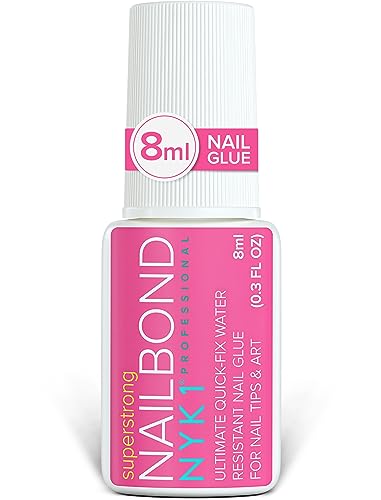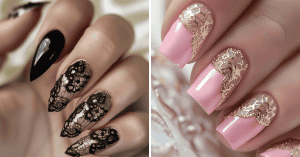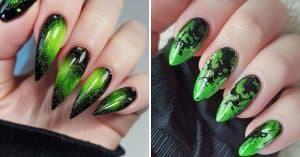Super glue and nail glue share a similar chemical composition, primarily cyanoacrylate, which is why people sometimes consider using super glue as a substitute for nail glue.
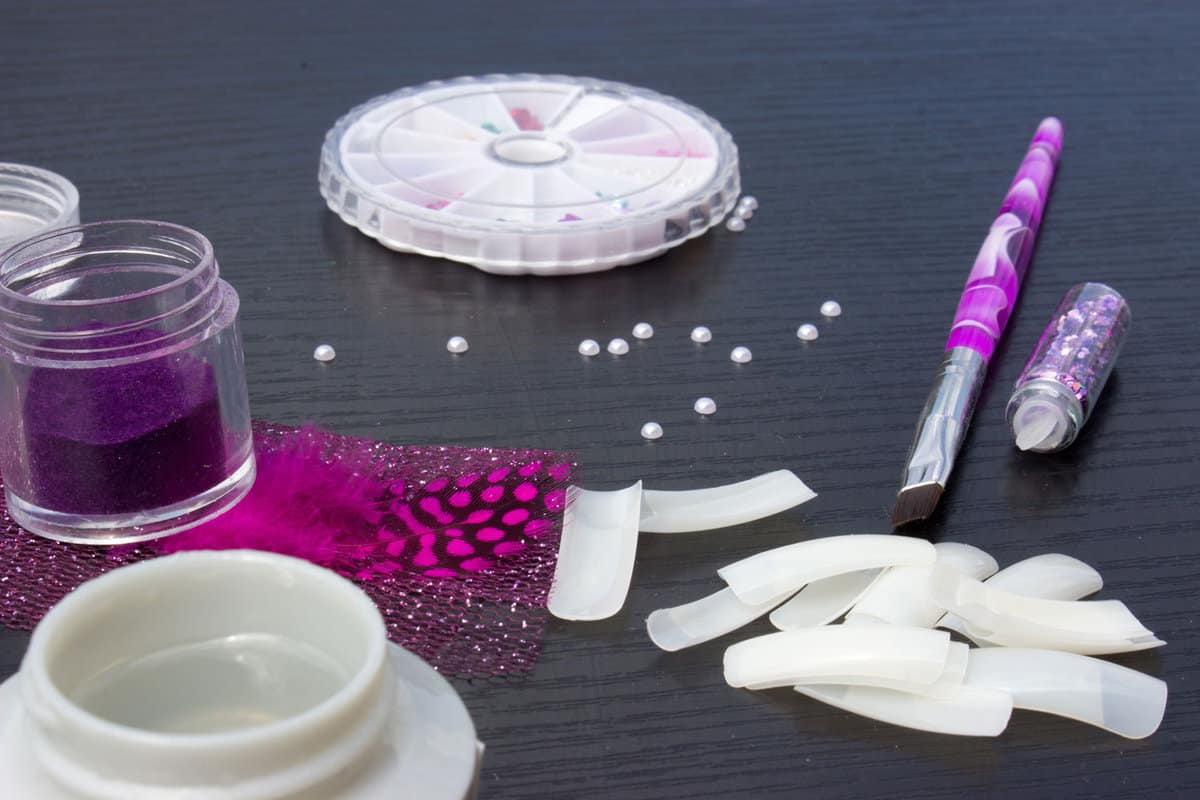
This article may include affiliate links and elements that were carefully created by our team using advanced ai to help you envision the best style advice.
However, it's essential to understand the differences and the potential risks before deciding to use super glue on your nails.
Nail Glue Vs. Super Glue — What’s The Difference?
Nail glue is specifically designed for use on nails, both natural and fake. It is formulated to be gentle on the skin and nails, making it safe to use. Also, it is typically weaker than super glue, but it is still strong enough to hold fake nails in place for a few days.
On the other hand, super glue, also known as cyanoacrylate glue, is an incredibly strong fast-drying adhesive.
It is designed to bond quickly and firmly to a wide variety of surfaces, including plastic, metal, wood, and ceramics. However, super glue contains chemicals that can be harmful to human nails and skin.
Continue reading: Do Nail Polish Strips Damage Nails?
Can I Use Super Glue As Nail Glue?
Yes. Super glue and nail glue both contain the adhesive compound cyanoacrylate, making super glue effective in binding artificial nails or mending natural nail breaks. However, super glue is potent and can bond skin quickly, so precise application is essential.
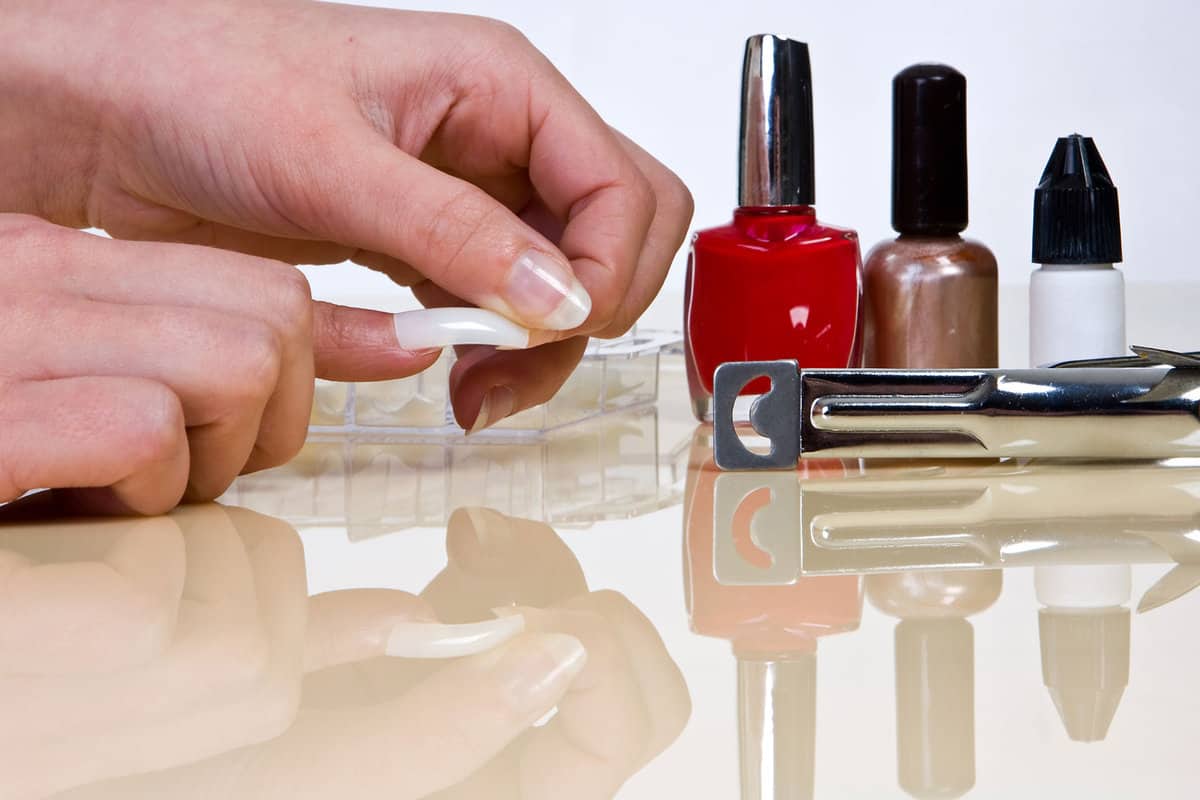
While it offers a durable bond, removing it can be challenging, and its prolonged use may make nails brittle. Thus, while it can be used as an alternative, caution is advised.
Is It Safe To Use Super Glue As Nail Glue?
The short answer is no. It is not safe to use super glue as nail glue. While super glue and nail glue may seem similar, they are not the same product.
Super glue is not formulated to be used on nails and can cause skin irritation, burns, and damage to your nails. One of the biggest concerns with using super glue on your nails is its toxicity.
Super glue contains chemicals that may be harmful if they come into direct contact with your skin or nails. Nail glue, on the other hand, is formulated to be safe for use on nails and is less likely to cause any adverse reactions.
Another issue with using super glue as nail glue is that it can be challenging to control the amount and placement of the glue. This can result in the glue spreading to areas where it shouldn't, causing damage to your skin and nails.
Reasons Why You Shouldn’t Use Super Glue As Nail Glue
If you're thinking of using super glue as a substitute for nail glue, think again. While it may seem like a quick fix, there are several reasons why you should avoid using super glue on your nails.
1. Toxic Fumes
Super glue's primary component, cyanoacrylate, releases fumes as it dries due to its rapid polymerization process. Inhaling these vapors can lead to uncomfortable symptoms such as headaches, dizziness, and a burning sensation in the eyes and nose.
The risk is further elevated when applying the glue near the face, as in the case of nails, due to the higher likelihood of inhaling a concentrated amount of these fumes.
2. Harsh On Nails
Super glue is tailored for heavy-duty bonding and is suitable for non-porous materials like metals or plastics.
When applied to the softer structure of nails, its adhesive properties can strip away the natural oils, resulting in nail dehydration. Over time, this can cause the nails to become brittle, leading to cracks or splits.
Continuous usage can even change the nail's natural structure, causing thinning and weakening of the nail plate and underlying bed.
3. Skin Irritation
The skin can experience an immediate stinging or burning sensation upon contact with super glue. The discomfort is heightened if the glue becomes trapped between the nail and the skin.
Moreover, certain individuals might be allergic to the chemicals in super glue, which can cause reactions like redness, itching, swelling, or even blistering.
The skin surrounding the nails is especially sensitive, making it particularly susceptible to such adverse effects.
4. Difficulty In Removal
Super glue is renowned for its formidable bonding strength, a trait that proves problematic when used on nails. Its bond with the nail is so resilient that typical nail polish removers are ineffective against it.
To counteract the adhesive strength of super glue, you may need to resort to stronger solvents or even physical methods like scraping.
These techniques can further damage the nail, leading to peeling of its layers or pain if the glue is inadvertently pulled or chipped off.
Also worth the read: 10 Best Pedicure Kits For Dry Skin
DIY Nail Glue As An Alternative
If you're wary of using super glue, you can make your own DIY nail glue at home. It's a quick and easy alternative that can save you a trip to the store.
Step 1: Gather Materials
Begin by assembling your necessary ingredients. You will need:
- Clear nail polish (almost empty bottles work great)
- PVA glue (white school or craft glue)
Step 2: Mix Ingredients
If you prefer using clear nail polish as a base, pour several drops of PVA glue into your almost-empty clear nail polish bottle.
But, if you're leaning more towards just using PVA glue, place a small amount of it into a mixing container, adding a few drops of water to slightly thin its consistency.
Step 3: Blend Thoroughly
Shake or stir the mixture until both ingredients are well combined and the consistency is smooth.
Step 4: Clean Your Nails
Ensure that your natural nails are clean, free from any oils, and dry. This helps in better adherence to the artificial nails.
Step 5: Application
With your DIY nail glue ready, use any application tool, like a brush, toothpick, or even the brush from the nail polish bottle.
Apply the glue onto your natural nail and hold firmly for about 10-15 seconds to allow the bond to set. Once done, give it ample time to dry thoroughly.
Step 6: Store Properly
If you've made extra DIY nail glue, ensure you store it in an airtight container to prevent it from drying out. Remember, since this DIY version doesn't contain preservatives, its shelf life will be shorter than commercial nail glues.
Step 7: Removal
To remove artificial nails, soak them in warm, soapy water. They'll loosen with gentle pressure after soaking due to the DIY glue's milder strength. If necessary, a little acetone or nail polish remover can also help.
Tips When You Use Super Glue As Nail Glue
If you still want to use super glue even after hearing about the risks, it's important to be very careful. Here's how you can try to use super glue on your nails in a safer way:
1. Test First
Before using super glue on your nail, do a small patch test to check for skin reactions.
2. Use A Small Amount
You don't need a lot of super glue to attach fake nails. A tiny drop is enough to hold the nail in place.
3. Apply It Carefully
Use a toothpick or a cotton swab to apply the glue to the nail, making sure to avoid your skin.
4. Remove It Carefully
Be gentle when it's time to remove the fake nail. Utilize an acetone-based nail polish remover to break down the adhesive.
6. Be Cautious
If you have sensitive skin or are prone to allergies, it's best to avoid using super glue as nail glue.
How Long Does Super Glue Last On Nails?
When super glue is used on nails, it typically lasts between a few days to over a week. The exact duration depends on your daily activities and how often your hands come in contact with water.
Again, it's important to note that super glue wasn't made for nails, so using nail-specific products is recommended for better care and results.
How To Remove Super Glue On Nails?
Here are some simple steps you can follow to remove super glue from your nails.
Method 1: Using Acetone
Acetone is a common ingredient in nail polish remover and is an effective way to remove super glue from your nails. Here's how to do it:
- Soak a cotton ball or pad in acetone.
- Place the cotton ball or pad on top of the glued area of your nail.
- Hold it in place for a few minutes to allow the acetone to dissolve the glue.
- Gently rub the cotton ball or pad over the glued area until the glue comes off.
- Wash your hands with soap and water to remove any remaining acetone.
Method 2: Using Warm, Soapy Water
If you don't have acetone on hand, you can also use warm, soapy water to remove super glue from your nails. Follow these steps:
- Fill a bowl with warm, soapy water.
- Soak your nails in the water for 10-15 minutes.
- Use a soft-bristled brush to scrub the glued area until the glue comes off gently.
- Rinse your hands with clean water and dry them with a towel.
Method 3: Using Olive Oil
If you have sensitive skin or don't want to use chemicals to remove super glue from your nails, you can try using olive oil. Here's how:
- Apply a generous amount of olive oil to the glued area of your nail.
- Rub the oil into your nail and the surrounding skin.
- Use a soft-bristled brush to scrub the glued area until the glue comes off gently.
- Rinse your hands with warm water and dry them with a towel.
Related article: How To Remove Nail Glue From Carpet
Choosing the Right Adhesive
In conclusion, super glue isn't the best choice for fake nails; it's harsher than nail glue and can cause damage or infection. Stick to nail glue or safe DIY options to protect your nails. Always follow product instructions and seek medical advice if you encounter any issues.

